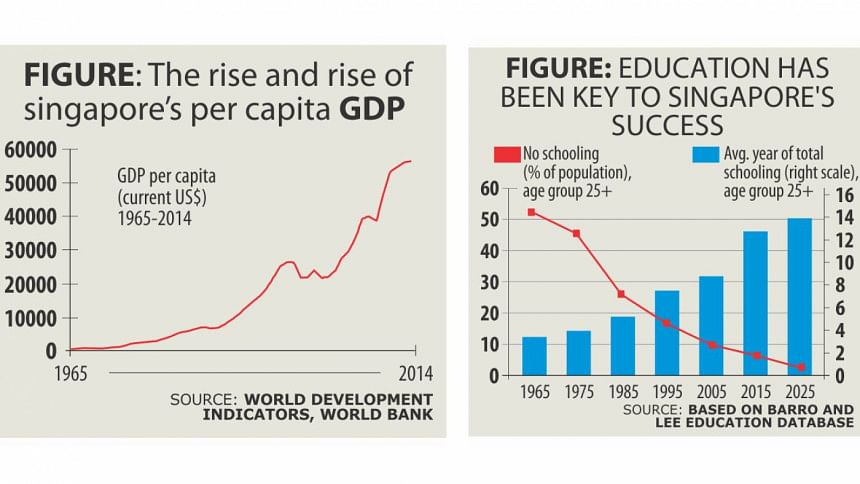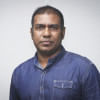Singapore at 50: From Third World to First

Singapore is set to celebrate the 50th anniversary of its independence on August 9. Once known as a backward fishing village, Singapore now has one of the highest per capita GDP (about US$56,000) in the world. It is ranked as the third most competitive economy, behind the United States and Hong Kong. The city state is one of the best governed countries, thanks to low crime rates and virtually no public sector corruption.
Nevertheless, Singapore has drawn global attention for its contribution to urban development. It is a de facto living urban laboratory. The island nation is one of the forerunners to develop a host of modern urban amenities. It offers good living to 5.5 million of its inhabitants in a mere 697 sq km area, making it one of the most densely populated countries in the world.
Moreover, if cities are changing the global geo-political order that the 21st century might not be dominated by America or China but by the city, Singapore, also known as 'a little red dot', is surely one of the key catalysts behind this change. This, according to some analysts, is largely due to time, technology and population growth that have accelerated the advent of this urbanised era.
However, at the time of Singapore's independence, first from the United Kingdom in 1963 and then from Malaysia in 1965, virtually no one believed that a resource scarce Singapore could even survive. Its founding father Lee Kuan Yew, who expired in March this year, remarked that 'an independent Singapore was a political, economic and geographic absurdity.'
How Singapore has transformed itself from a third world country to a first rated nation? A host of factors have been credited for its rapid development. The country was guided by Lee Kuan Yew's astute leadership. Samuel Huntington termed him one of the 'master builders' of the 20th century. Mr. Lee and his successors ensured that Singapore is run by a small but very efficient government. It also enjoyed relatively stable regional environment thanks to the US-led Asia Pacific order. The regional entity ASEAN has also been equally effective in maintaining stability as well as integrating the vast markets of Southeast Asia.
Located in the mouth of Malacca Strait, through which about 40 percent of global trade passes, Singapore is the second largest container port of the world after Shanghai. It is also a hub for regional and global air travel. Given the lack of hinterland, the lion city had no choice but to look outward. Its 22 percent of income are generated in overseas. The city state has been very open to trade, investment, technology and talent. As a result, it has become the Asian headquarter for hundreds of leading Multi-National Companies (MNCs).
Meritocracy has been one of the guiding principles of Singapore, which ensures that the best and brightest, regardless of race, religion and socio-economic background, find a level playing field to develop to their fullest potential. Its education system produces high quality English speaking graduates, critical to draw MNCs. Moreover, as majority of Singaporeans are largely Mandarin speaking ethnic Chinese, the country has also been well placed to take advantage of the rise of China.
In a multi-ethnic country, Singapore's education system and job markets offer equal opportunity for all, and the laws are enforced strictly, ensuring that the society is not divided based on religion or race.
Singapore's economic model is a mix of a neoliberal and socialist features. It has developed some of the best institutions. They include the Economic Development Board, Central Provided Fund Board (CPF), Housing Development Board (HDB), Urban Redevelopment Authority, Monetary Authority of Singapore, and a host of GICs (Government linked companies) such as Temasek Holdings and Singapore Airlines. The CPF Board mandates that Singaporeans save a large share of their income, making the nation one of the highest savers in the world. Thanks largely to HDB, the island nation has no slum and virtually no homelessness. Singapore Airlines, among others, helped develope 'brand Singapore'.
That said, Singapore is also a victim of its own success. It is one of the most expensive cities to live in, according to the Economist Intelligence Unit. The city state has one of the highest millionaires per capita in the world. At the same time, its income inequality is also very high. Its population is ageing rapidly and fertility rates are dropping fast, forcing the country to depend on immigrants. Of its 5.5 million residents, more than half were born outside of Singapore. This has generated huge political backlash as the country has become very crowded.
Moreover, many Singaporeans blame foreign talent and low-end workers for their depressed wages. Housing is becoming less affordable for the new generation. All these issues are affecting the island's politics. The ruling People's Action Party, which has been at the helm since the country's independence, faced significant setback in the last general election.
As Singapore prepares for the next 50 years, the ever cautious nation worries whether the policies that paid dividend in the past could work out well in future as well. The country's policymakers and thought leaders are drawing scenarios examining both internal conditions and external environment.
The success of Singapore economy is tied to high-end manufacturing and services sectors. In other words, it has to depend on higher productivity for growth. But for the past few years its labour productivity is on the decline. The latest economic restructuring that began in 2010 urges companies to produce more with fewer workers. To draw tech start-ups and venture capital, it has developed high tech parks. Singapore is banking on advanced manufacturing, aerospace and logistics, applied health sciences, smart urban solution and financial services for its future growth. Externally, China and ASEAN would be even more critical for growth in decades to come.
The city state's traditional locational advantage faces some challenges, as China is spending billions of dollars developing ports and other maritime infrastructure to connect its coastal cities and backward regions with the Indian and Pacific Ocean as well as Central Asia and Europe by overland Silk Road. The potential development of the Kra Isthmus Canal, connecting the Gulf of Thailand with the Andaman Sea could save ships, some 1200 km off the total distance travelled. If built, this could undermine the importance of the Strait of Malacca and Singapore.
As far as its foreign policies are concerned, Singapore's biggest challenge is to maintain a balanced relation with its traditional economic and security ally, the USA and the surging power, China.
It is hard to predict the future of Singapore. However, its economic fate could largely be determined by the quality of tertiary education, adaptation of technology and innovation. To maintain a stable political order, the authorities have to be even more accommodating to the voice of the social media generation, as well as allocating more political space for the opposition. Singapore's vision to develop a smart nation also largely hinges on how it develops an innovation driven economy and applies technology to meet societal needs.
The writer is an economist and alumnus of National University of Singapore.
Email: [email protected]

 For all latest news, follow The Daily Star's Google News channel.
For all latest news, follow The Daily Star's Google News channel. 



Comments